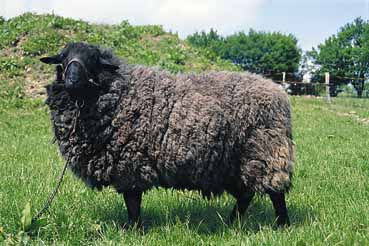Type the name of the breed you're looking for below
[wpdreams_ajaxsearchlite] Don't see the breed your're looking for? Click here and let us know!
Pomeranian Coarsewool sheep
| Place of Origin | Germany |
| Origin | The Pomeranian Coarsewool Sheep or Pomeranian Sheep (German: Pommersches Rauhwollschaf; Pommernschaf; Rauhwolliges Pommersches Landschaf) is an old domestic sheep breed from the Pomerania region. The first records of similar sheep in Pomerania can be traced to more than 3000 years ago. This breed is raised primarily for meat and vegetation management. Initially, this breed was called Grauwollschafe ("greywool sheep"), which in time changed to Rauhwollschafe ("coarsewool sheep") by dropping the first letter. The breed almost vanished in the second half of the 20th century, when the population dropped below 100 and it was placed on the Red List of endangered livestock breeds. The population has since recovered somewhat. |
| Purpose | Meat, Vegetation managment |
| Characteristics | They are medium-sized, hornless sheep, with sturdy long legs and hard hoofs. The medium-sized head with its straight nose, as well as the limbs and tongue are black. Rams and sometimes ewes have black, rough manes. Long woolly tails round out the picture. Ewes average around 55 kg (121 lb) in weight, and rams about 65 kg (143 lb). The fleece ranges from 3.5 to 7 kg (7.7 to 15.4 lb). The Pommern are highly resistant against parasites. They are not fussy eaters, thrive on sandy, as well as moory ground and can be kept alone or in small flocks. They attach themselves to people, are hardy and not demanding. They lamb easily by themselves on the pasture and can be bred three times in two years. It is a dual-coated breed, with an outer coat of 14-22 cm long wool and a fine downy undercoat. Fleece weight is 3-5 kg, with a fiber diameter of 30-40 microns. Lambs are born black and turn steel-gray, blue-gray, gray-brown, or light gray. Not permitted are the colours white, brown, black. The Pommern turn lighter as they age, therefore a silver-gray lamb will turn white and should be culled. Handspinners love the wool with its interesting shades of gray and they turn the yarn into rugged, indestructible sweaters and jackets. The handspun wool turns out softer than the same fleece spun by machine. When attempting to felt the wool, it requires more work than with a fine wool and the dark kempy hair poke out of the felted fabric. |



